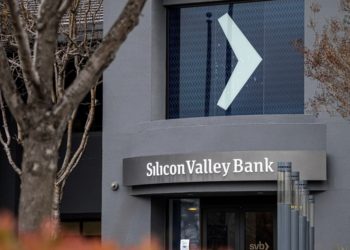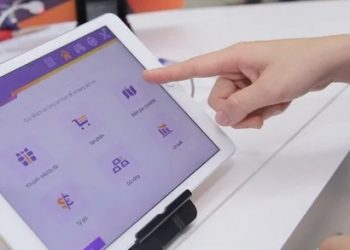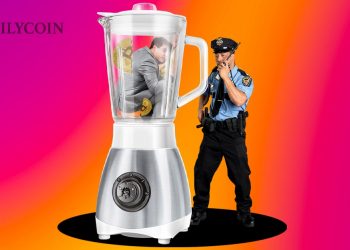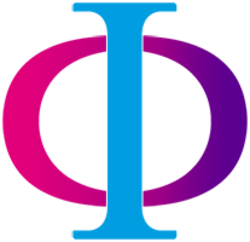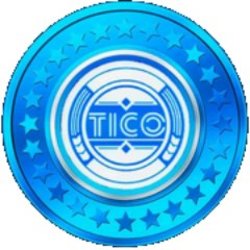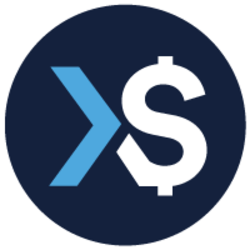Sự sụp đổ của Terra-Luna là một trong những sự kiện tai hại nhất trong lịch sử tiền điện tử gần đây. Sự sụp đổ của stablecoin của nó, được thiết kế để trở thành một tài sản biến động thấp, đã làm rung chuyển niềm tin vào tất cả các stablecoins.
Các sự kiện gần đây đã làm nổi bật token USDD, stablecoin được tạo ra bởi người sáng lập Tron Justin Sun. Kể từ đầu tháng Mười Hai, mã thông báo đã giảm xuống dưới mức 1:1 so với đồng đô la Mỹ.
USDD hiện đang giao dịch trong phạm vi $0.97 – $0.98. Sau các báo cáo về xung đột, sa thải, và dòng chảy gần đây từ sàn giao dịch Huobi của ông, đây là tin xấu đặc biệt cho Justin Sun và Tron. Tuy nhiên, các vấn đề với USDD có thể đi sâu hơn.
Dự trữ sai báo cáo, Burn ví mà không đốt Token…
Một cái nhìn nghiêm trọng về stablecoin USDD và nhà phát hành Tron DAO Reserve cho thấy những vấn đề nghiêm trọng trong báo cáo dự trữ. Mặc dù các mối quan tâm sẽ được giải thích chi tiết dưới đây, ngắn gọn, đây là:
- Tron DAO Reserve tuyên bố nắm giữ hơn 200% tài sản thế chấp, bao gồm 725 triệu USD trong một ví. Địa chỉ ví có liên quan thực sự nắm giữ 448 triệu đô la, đặt tài sản đảm bảo USDD thực tế gần 171%.
- Khoảng một nửa dự trữ USDD nằm trong token TRX của riêng Tron. Trong lịch sử, sử dụng token của một người làm tài sản thế chấp thường không bảo vệ các nhà đầu tư, như với FTX và dự trữ FTT của nó.
- Hầu hết các dự trữ này nằm trong một “ví đốt” mà không thực sự đốt cháy bất kỳ thẻ nào. Ví cũng cho phép các bên không xác định được rút token đến các địa chỉ khác nhau.
- Tron DAO Reserve cũng tuyên bố họ nắm giữ dự trữ đáng kể ở USDC và USDT stablecoins. Tuy nhiên, địa chỉ ví của nó cho thấy rằng nó đã cho mượn tất cả các stablecoins của mình cho nền tảng cho vay của riêng Tron JustLend.
- Tron DAO Reserve cũng quảng cáo một 48% “rủi ro” lợi nhuận hàng năm về đầu tư, lặp lại lời hứa được thực hiện bởi Terra-Luna.
- Một cuộc kiểm toán CERTIK đã tìm thấy “các lỗ hổng liên quan đến tập trung lớn” trong hợp đồng thông minh của JustLend.
- Điều này để lại USDD chỉ với 14,040.6 Bitcoin. Các cổ phiếu BTC chỉ chiếm một phần ba nguồn cung USDD.
Cùng với sự suy thoái thị trường crypto gần đây và tin đồn về những rắc rối của Huobi, những phát hiện này có thể cho thấy những rủi ro hệ thống nghiêm trọng trong hệ sinh thái của Tron.
Dài tháng của USDD Stableecoin
Trong nhiều tháng, USDD có xu hướng giảm, đấu tranh để duy trì chốt của nó với đồng đô la. Vào thứ Ba, ngày 06 tháng 12, mọi thứ đã làm sáng tỏ cho USDD khi nó lại giảm xuống dưới $0.98.
source: coinmarketcap.com
Xu hướng này bắt đầu từ ngày 02 tháng 12 năm 2022, khi mã thông báo bỏ qua dưới $0.99. USDD tiếp tục giảm đều đặn trong những ngày tiếp theo, và mã thông báo chưa bao giờ phục hồi hoàn toàn mức $0,99 kể từ đó.
Tuy nhiên, xu hướng này có thể đã bắt đầu sớm hơn. Theo CoinMarketCap, lần cuối cùng USDD giao dịch ở mức $1 là vào ngày 18 tháng 10 năm 2022.
Sự giảm phù hợp dưới chốt stablecoin đại diện cho một tín hiệu đáng lo ngại. Các nhà đầu tư trả tiền cho thẻ USDD của họ trong các stablecoins khác muốn biết rằng họ có thể mua lại chúng cho cùng một số tiền. Họ có thể trở nên lo lắng rằng mã thông báo sẽ giảm hơn nữa nếu họ không thể.
Ngay cả sự đảm bảo từ người sáng lập Tron Justin Sun cũng không đủ để truyền cảm hứng cho sự tự tin. Sun tuyên bố rằng token có hơn 200% tài sản thế chấp. Dữ liệu trên chuỗi cho thấy những con số này không chính xác.
USDD Thiếu dự trữ, Báo cáo không chính xác
Tron DAO Reserve và trang web USDD tuyên bố rằng mỗi token USDD có hơn gấp đôi số lượng token khác làm tài sản thế chấp. Theo công ty phát hành USDD, dự trữ của nó ở tỷ lệ tài sản thế chấp 202.30%. Dữ liệu trên chuỗi vẽ một bức tranh khác về dự trữ của USDD.
Đối với một, hầu hết các dự trữ này nằm trong token TRX của riêng Tron. Trở lại vào tháng 7, Sun tuyên bố rằng USDD không phụ thuộc vào giá token của Tron.
“Sự ổn định của USDD được hỗ trợ bởi tài sản dự trữ của Tron DAO Reserve chứ không phải giá của TRX,” Sun nói. Ông nói thêm: “Miễn là TDR có đủ dự trữ, USDD sẽ ổn định”.
Dữ liệu trên chuỗi cho thấy 48,70% dự trữ USDD nằm trong token TRX của Tron. Nếu TRX giảm, số tiền đảm bảo sẽ bị ảnh hưởng. Hơn nữa, trữ lượng của Tron DAO Reserve không được báo cáo chính xác trên trang web của mình.
nguồn: tdr.org
Một phần của trang web Tron DAO Reserve cho thấy một địa chỉ ví, “Hợp đồng đốt cháy TRX” (thêm về điều đó sau này), nắm giữ gần chín tỷ token Tron (TRX), trị giá 725 triệu USD.
 100vw, 700px” data-lazy-src=” https://okitrend.com/wp-content/uploads/2023/ 01/usdd-site-sreenshot.jpg )

source: tdr.org
The problem is that nine billion TRX tokens are not worth $725 million. Rather, at the current market value of $0.05 per token, the value of TRX in that wallet is closer to $498 million.
It is unclear how this discrepancy came to be. TRONSCAN, the blockchain explorer for Tron, values the tokens in the “burn wallet” correctly.
Misreporting the contents of the “burn wallet” brings the real collateralization figure down to 170.95%. Earlier, Twitter users pointed out this same discrepancy, and Tron DAO Reserve didn’t correct it.
The reserves are called further into question when looking at what Tron’s “burn wallet” actually is.
Tron’s “Burn Wallet” Doesn’t Burn Any Tron
In most cryptocurrencies, a “burn wallet” is a wallet address from which crypto can’t be retrieved. Projects can “burn” their tokens to remove their supply from circulation. They can do this for several reasons, including reducing the token supply to reward investors.
Burn wallets serve an important role in stablecoins. For instance, traders could burn $1 worth of Luna (LUNA) in the Terra-Luna ecosystem to get one TerraUSD (UST). The burned Luna would go to a burn wallet to remove it from circulation. At the same time, traders can burn TerraUSD to get $1 in Luna tokens. These TerraUSD tokens then go to a burn wallet, where they can’t be retrieved.
USDD also has its own “Tron multi-signature burn wallet” that performs a similar function. When users want USDD tokens, they first have to buy TRX tokens. These TRX tokens go to Tron’s burn wallet, and a user gets an equivalent amount of USDD tokens.
Yet the wallet is not actually a burn wallet in the real sense of the term. In reality, the wallet’s smart contract shows that the wallet owners can retrieve the tokens and put them back into circulation. The wallet’s smart contract includes references to the redeem function.


source: tronscan.org
This redeem function is behind a multi-signature key. As Tron’s website explains, multi-signature (multisig) refers to the process requiring more than one key to authorize a transaction.
There is no information on who controls the signatures. That means an unknown number of users (possibly Tron insiders) can access these funds.
Tron DAO Reserve advertises this “burn” contract as a part of its reserves. The $498 million in TRX in the “burn wallet” account for 40.16% of the total reserves backing USDD.
‘DeFi’ Lender JustLend Holds ALL Tron DAO Reserves’ USDC and USDT Reserves
Tron DAO Reserve holds 48.70% of its reserves in Tron (TRX). According to its website, the second-largest segment of its reserves is in stablecoins.
The USDD issuer says it holds many of its reserves in independent stablecoins, namely USD Coin (USDC) and Tether (USDT).
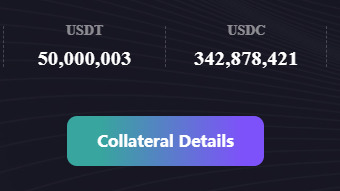

source: usdd.io
Reserves in these stablecoins account for $392,878, or about 31% of USDD reserves. However, the relevant wallet address shows that the DAO holds no USDC or USDT tokens.
Instead, the wallet addresses show an equivalent amount of JustLend USDC and JustLend USDT tokens.


source: tronscan.org
The issuer of these tokens is JustLend DAO, Tron’s lending platform with ties to Tron DAO Reserve.
The fact that a significant amount of USDD reserves is on JustLend could be concerning. For one, the lending platform offered yields far beyond the market rate.
In May 2022, Justin Sun advertised JustLend’s 40% annual percentage yield on USDD mining. He also revealed that Tron DAO Reserve subsidizes these high yields.
Advertising a “Risk-Free” Yield of 48%
Tron DAO Reserve does the same thing. It offers “risk-free” yield farming opportunities through its stablecoins, with advertised returns as high as 48.52%.
"The TRON DAO Reserve provides risk-free yield subsidies for mainstream stablecoins on the TRON network. Supported by smart contracts on multiple platforms, it offers users higher APYs while safeguarding their assets," the website states.


source: tdr.org
The links on these claims redirect users to Tron’s SUN staking platform. There, users can stake their stablecoins to earn SUN tokens.
Instead of being “risk-free,” yield farming is a high-risk investment strategy. It exposes users to multiple risks, many of which can result in total losses. These include impairment loss, when one of the tokens of a liquidity pair falls in value. SUN’s website has a section that mentions risks. But this section is buried beep in the site’s menus, and it’s not easy to find.
The inherent risks of yield-farming are not the only thing that investors should be worried about. As the FTX implosion shows, investors should consider the risk of giving custody to unregulated entities.
The Terra-Luna collapse shows there could also be a substantial counter-party risk of the entire Tron ecosystem breaking down.
JustLend Smart Contract Has “Major Vulnerabilities’ and Centralization-Related Risks
JustLend’s security audit paints an even more concerning picture. On its website, JustLend displays a security audit by a blockchain auditing firm CertiK. In its audit, CertiK found “major vulnerabilities,” including major centralization-related risks. One of these is that the smart contract has an “admin” role, with privileged access over all accounts.
Another part of the code gives the “anchorAdmin” role the ability to set anchor prices for assets and pause and resume the market.
The auditing firm cautions that if the admin account were compromised, hackers could take any user’s funds on the platform. Admin privileges in the JustLend smart contract suggest that the platform is not truly trustless and decentralized.
Essentially, Tron DAO Reserve is lending over $392 million in stablecoins to a centralized lending protocol that offers returns on investment far beyond the market rate.
Moreover, the ownership of this supposedly “decentralized” protocol is highly concentrated. The top ten token holders own 46.10% of the voting shares in the JustLend DAO.
Inaccurate reporting, issues with reserves coupled with aggressive marketing yields indicate that USDD and the entire Tron ecosystem might not be as stable as Justin Sun claims.
On the Flipside
- While facts reported in this article raise concerns, they do not constitute claims that Tron or any of the related entities are actually insolvent. Investors should use their judgment when deciding where to keep their money.
Why You Should Care
Tron’s ecosystem is one of the largest in the crypto space. Its TRX token is currently the 15th largest token by market capitalization, and any serious disruption could have significant ramifications for the entire crypto ecosystem.





